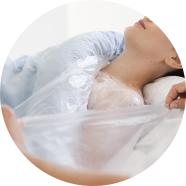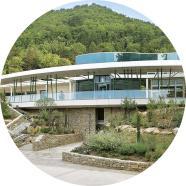The name derives from the ancient Greek ichtyus which means fish and by extension, scales. Ichthyosis is a monogenic genetic disease characterised by abnormally dry skin that sheds, giving an appearance like fish scales. It is caused by an abnormality in a gene that plays a role in the formation of the skin barrier. Its mode of transmission is variable and more than 50 genes are known to date, whose abnormalities lead to different types of ichthyosis.
All types of ichthyosis apart from ichthyosis vulgaris are included on the list of orphan diseases.

What is ichthyosis ?
The name derives from the ancient Greek ichtyus which means fish and by extension, scales. Ichthyosis is a monogenic genetic disease characterised by abnormally dry skin that sheds, giving an appearance like fish scales. It is caused by an abnormality in a gene that plays a role in the formation of the skin barrier. Its mode of transmission is variable and more than 50 genes are known to date, whose abnormalities lead to different types of ichthyosis.
All types of ichthyosis apart from ichthyosis vulgaris are included on the list of orphan diseases.
The different types of ichthyosis
There are a great many of them. The most common and least severe type is ichthyosis vulgaris which occurs after the age of 6 months or in adults. It gives the skin a greyish appearance, and it is very dry with fine scales except in large folds. It is often associated with atopic eczema. It subsides in summer with the sun and worsens in winter.

X-linked ichthyosis
Relatively common (1/2000) and only seen in boys. It is present at birth in the form of fine scales and subsequently worsens. Large, dark brown flakes appear on the limbs and trunk with thickening over the joints giving the skin a "dirty" appearance. The palms and soles are spared, and sometimes also large folds.
Lamellar ichthyosis
consists of very large dark brown flakes with thickening of the palms and soles.
Ichtyosiform erythroderma
manifests as redness with desquamation of the entire skin, with bullous shedding in certain types (bullous ichthyosiform erythroderma). These conditions are present from birth. Other types of ichthyosis may be associated with abnormalities other than of the skin.

The impact of ichthyosis
From the earliest days of infancy, patients suffer from dry skin, including the face and scalp. Scalp involvement leads to abundant dandruff. The formation of cracks over the joints leads to difficulties in motor skills. The epidermis no longer exerts its protective function. Patients are more prone to infections. A build-up of flakes can cause a hearing disorder. Frequent eversion of the lower eyelids (ectropion) causes ocular discomfort.
The unsightly nature of ichthyosis has psychological repercussions. Patients may feel negatively about how others see them. This leads to a feeling of exclusion and low self-esteem. All acts of daily living are complicated.
Treatment
To date, there is no medical treatment that can cure ichthyosis. Replacement therapies and gene therapies are still at the research stage.
Depending on the family context, during pregnancy it may be useful to make a prenatal diagnosis. There are symptomatic treatments that may improve patient comfort.



Psychological support of intensive treatment
Furthermore, the intensive treatment is also an opportune moment to meet other patients, receive psychological support, try relaxation exercises and get make-up advice to restore self-esteem where it has been eroded by the views of others.




